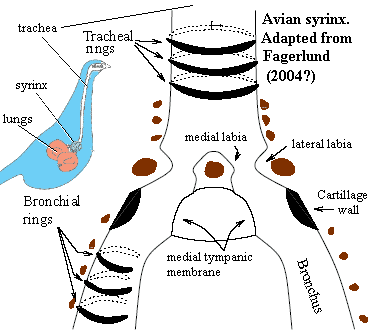(An Oregon dark-eyed junco, Junco hyemalis thurberi)
For the last couple of years, this question has been a source of debate among bioacousticians, but a new paper from an international pair of collaborators seeks to end the controversy. The duo made use of a database of more than 1000 recordings of 151 male dark-eyed juncos (Junco hyemalis thurberi) from southern California. Like many songbirds, juncos do not sing at a consistent volume (more scientifically referred to as amplitude) throughout each vocal performance; within each bout, some notes and syllables are invariably quieter than others. The researchers reasoned that these natural fluctuations in volume could be used as a proxy for the different amplitudes characterizing urban and rural songs. If frequency hikes are merely a side effect of singing louder, then louder songs should be characterized by higher frequencies--or, more specifically, higher minimum frequency, the characteristic most consistently impacted in anthropogenic noise studies. On the other hand, if these two song traits are independently controlled, any relationship between the two variables would be possible--for instance, frequency might remain consistent or even decrease during the performance of higher-amplitude vocalizations.
In the current study, the amplitude-frequency relationship was examined at two different levels. First, the researchers compared the loudest and softest songs within individual males' song bouts (which consist of several songs sung in a row). Although junco songs usually consist of a single syllable, some comprise two or more; where this is the case, the first and last syllable are usually quieter than those in the middle. Thus, the second analysis compared the loudest and quietest syllables within a single song.
(UCSD campus, where researchers have studied urban dark-eyed juncos that produce vocalizations notably different from those of their more rural brethren; city birds also look different from their country cousins.)
Results of both analyses were opposite to the trend that would be expected if high frequency were a byproduct of greater amplitude. Specifically, louder songs and syllables had lower, not higher, peak frequencies. The researchers worried that these patterns may have been influenced by random variations in bird behavior--subtle shifts in singing posture that cause the birds to look away from the microphone and therefore sound quieter than they actually are. However, additional analyses revealed that measurement error was not likely to have been responsible for these results. Thus, it appears that, in juncos at least, frequency and amplitude shifts in noisy environments are two separate mechanisms that the birds use to avoid masking by anthropogenic sounds.
While this result contradicts a popular current theory, the authors indicate that they do not find it altogether surprising. The avian vocal system, they argue, maintains a separation between amplitude and frequency: The former is manipulated by the contraction of respiratory muscles, while the latter is regulated by specialized syrinx (or "vocal cord") muscles. Further, previous work has revealed that many birds experience seasonal shifts in song frequency (presumably as a result of hormonal fluctuations), but not of song amplitude, indicating that there is no reason to assume that these two characteristics should necessarily be linked.
(Diagram of a bird's vocal morphology)
However, the researchers point out that their results do not completely rule out coordinated fluctuations in these two song traits. For instance, if there were some physiological or morphological response to noise that impacted muscles in general, then both respiration and syrinx movement could be altered, thereby causing simultaneous changes in amplitude and frequency. Additionally, the birds themselves might judge dual adjustments to be necessary in some situations.
Other studies have shown that amplitude modulations are more successful than frequency modulations at combating anthropogenic noise. If frequency shifts are not merely a side effect of amplitude adjustments, this leaves the question of why urban songbirds should rely so heavily on this less-than-perfect response to anthropogenic soundscapes. According to the researchers, it all boils down to energy: Singing louder is probably more demanding than singing at a higher pitch, so unless a bird is in peak physical condition and has lots of energy to spare, he may be more likely to pick the latter technique even if it is not as effective.
---
Cardoso, G.C., and Atwell, J.W. 2011. On the relation between loudness and the increased song frequency of urban birds. Animal Behaviour 82:831-836.
Thanks to the following websites for providing the images used in this post:
http://www.indiana.edu/~kettlab/fieldsites.html
http://academic.reed.edu/biology/professors/srenn/pages/teaching/web_2010/CG/mechanisms.html



No comments:
Post a Comment